Caviar, a symbol of culinary luxury, comes at a steep cost beyond its lavish price tag. For the first time, Animal Justice is exposing the immense cruelty endured by the fishes who are exploited for decades, and have their eggs cut out of them to be served as a delicacy.
This is Canada’s first-ever undercover investigation at a fish farm, and the world’s first insider look at the caviar industry. Our horrifying new footage exposes the dirty secrets behind the opulent garnish.
An Animal Justice whistleblower worked at Northern Divine Aquafarms, a caviar farm on British Columbia’s Sunshine Coast that sells certified organic and “sustainable” white sturgeon caviar and fish eggs, also known as “roe”, from coho salmons. With a hidden camera, they filmed widespread animal suffering and appalling practices.
View the Exposé
Caviar is too cruel to be sold—just like other luxury food products like foie gras and veal. Our shocking hidden-camera footage revealed:
- Fishes stabbed repeatedly in their abdomens to check for egg maturity
- Workers using straws to suck eggs out of fishes with their mouth
- A seven-foot sturgeon named Gracie living in tiny tank for at least 25 years
- Cramped & filthy living conditions for fishes
- Troubling deformities & injuries
- Fishes thrown on ice & being killed by freezing to death
- Fishes cut open while still alive
Animal Justice has filed a detailed animal cruelty complaint with the BC SPCA, which is investigating Northern Divine.
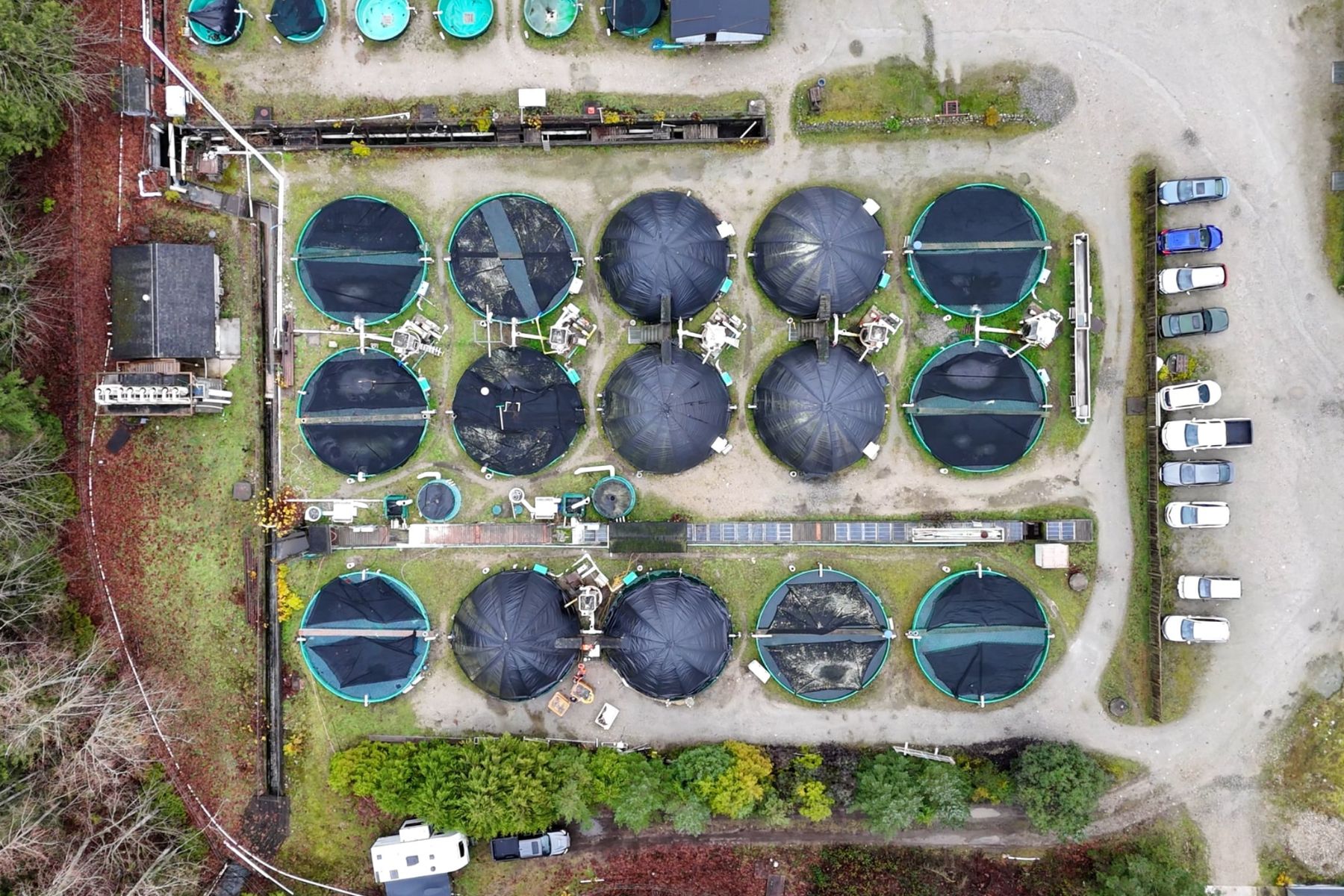
Sturgeons Stabbed & Killed for Eggs
Caviar has been criticized and even banned in some jurisdictions for its extreme impact on wild sturgeons, which are the most endangered species group on earth.
Sturgeons are intelligent and complex fishes who have lived on this planet for over 200 million years. They can grow to be 18 feet long, and weigh more than 1200 pounds. Sturgeon engage in social learning behaviours, have an impressive spatial memory, and are known to travel thousands of kilometres to spawn.
At Northern Divine Aquafarms, these fishes are forced to live in barren tanks in cramped conditions, and are kept alive for at least 11 years until they’re old enough to produce caviar eggs. According to staff at the facility, some sturgeons reportedly made attempts to escape their crowded tanks, and were sometimes found on the floor after laying there for hours.


“If you take an animal like a sturgeon who lives for decades and probably covers a lot of area in their long lives, and you put them into a relatively small tank, you can expect that the animal is going to be deprived.”
— Dr. Jonathan Balcombe, Ecologist & Author: What A Fish Knows
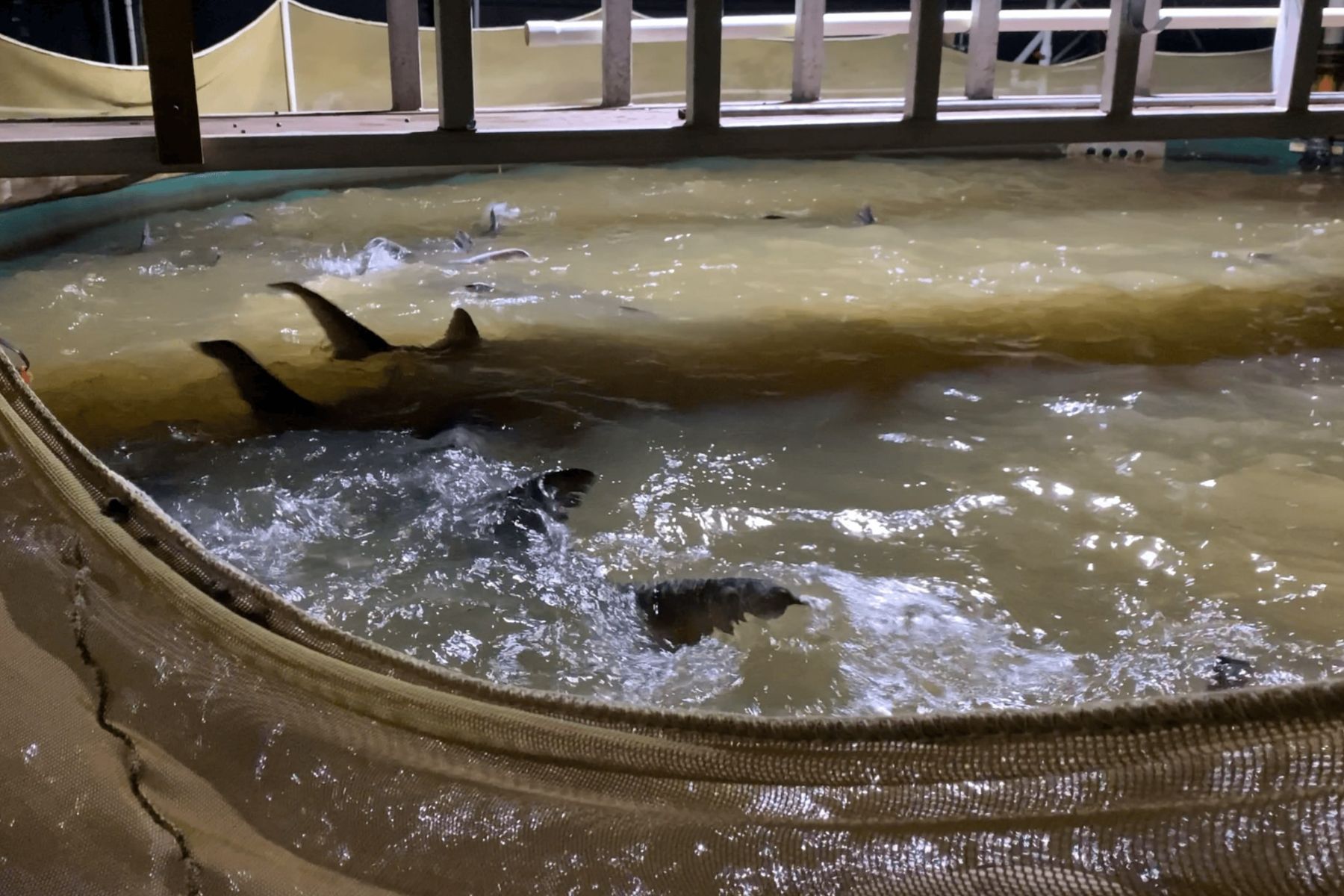

To keep track of the sturgeons, the farm injects a microchip near the back of their head with a thick needle. The sturgeons appear to writhe in pain as it’s injected.
“You can clearly see that fish is…in distress, and if the fish was a land animal, you would hear the fish as well.”
— Angela Fernandez, Professor, University of Toronto Faculty of Law
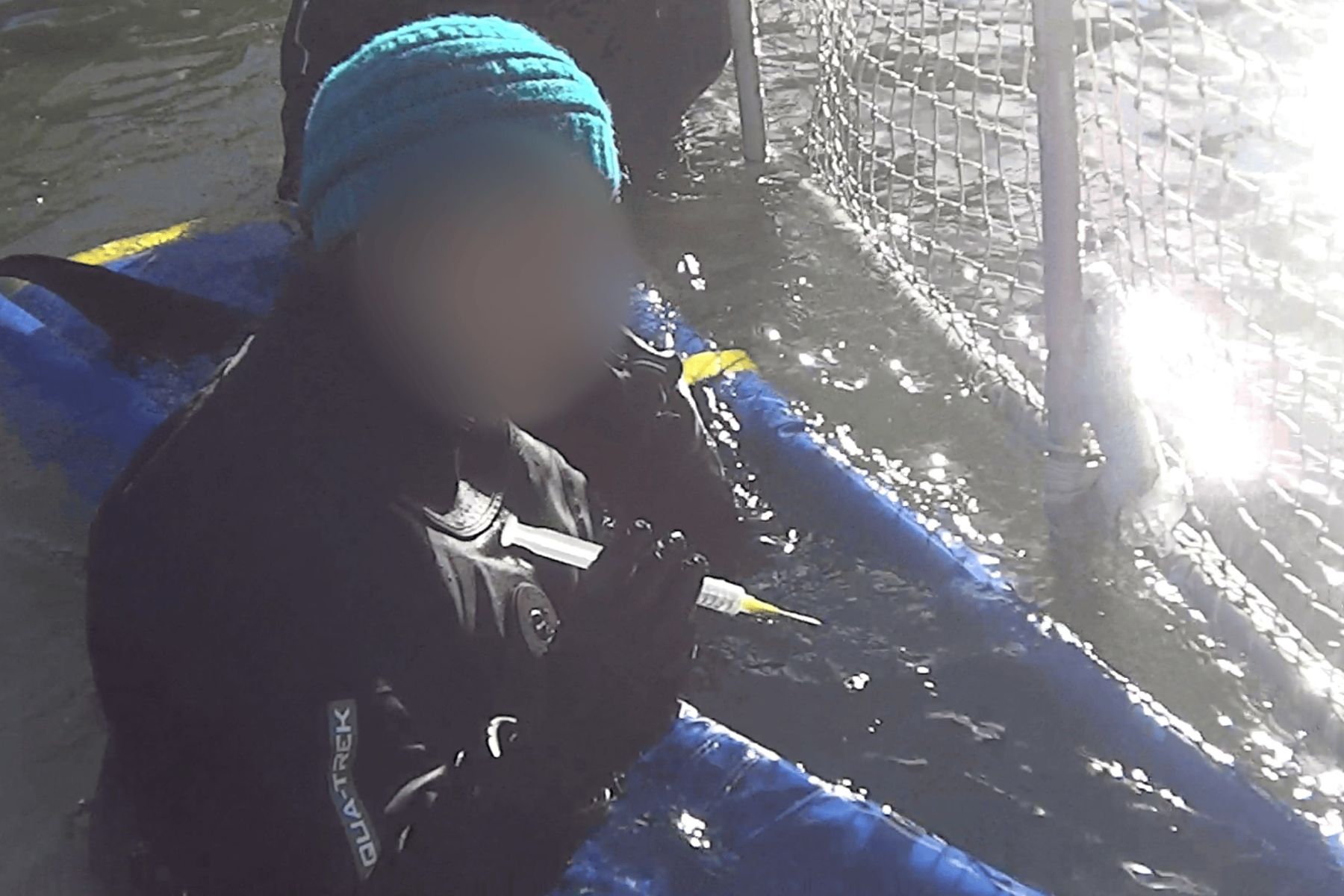

To check whether the fish eggs are ready to be sold as caviar, workers wrestle four to five feet long sturgeons onto a stretcher, stab them in the abdomen, insert a tube, and use their mouth to suck out the eggs. This procedure is agonizing for the fishes, and is done without the apparent use of painkillers. If the eggs aren’t ready, the fishes are tossed back into the pool. Many of the sturgeons endure this painful horror over and over during their lives, and have visible scars.


At Northern Divine Aquafarms, the employee whistleblower filmed a fish with a mouth deformity who was stuck swimming upside down, which can indicate a swim bladder issue. Another fish appeared to be missing a pectoral fin.
Leading up to when the fishes are killed for their eggs, they are intentionally starved for weeks to improve the taste. This cruel practice is known as staging. Sturgeons are killed with a captive bolt gun—the same pistol-like tool used to kill pigs, cows, and other larger animals on farms.
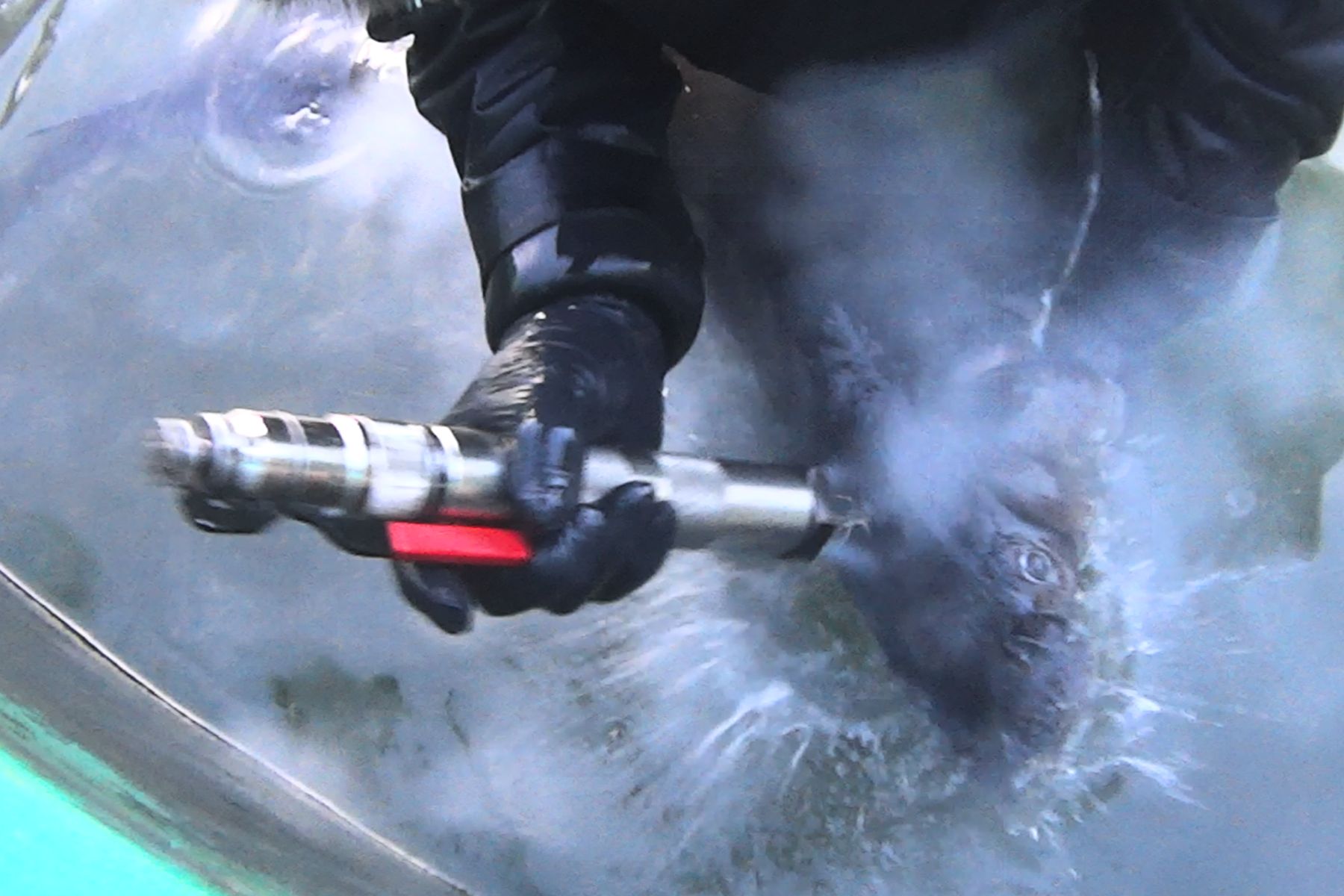

The Plight of Gracie the Sturgeon
Gracie is a seven-foot-long sturgeon who is over 30 years old. She’s been languishing in a barren tank at Northern Divine Aquafarms since at least 1999. In our exposé, a worker claimed Gracie’s parents were born in the Fraser River, and she was born in captivity.
Sturgeons deserve to swim free in the wild, with the ability to express their instincts and natural behaviours. But Gracie is forced to spend her days swimming in circles in her filthy tank. Despite a miserable existence, Gracie is curious and will often swim up to workers.
Gracie is used as a “broodstock” fish, and her eggs are not sold for caviar. Instead, they are regularly cut out of her and used to grow other sturgeons. There are about 38 fishes like Gracie used as breeding machines at Northern Divine, ranging from 15 years old to into their 30s—their long lives spent trapped in dirty, overcrowded tanks.


Sushi “Roe” Fish Eggs: A Gruesome Garnish
Northern Divine Aquafarms also raises coho salmons for their eggs, a product commonly known as “roe”, or “ikura”. These tiny orange eggs are often used as a garnish on sushi.
In the wild, salmons live complex lives and have impressive migratory behaviors. After maturing in the ocean, they swim upstream against a current back to their natal freshwater spawning grounds, guided by an extraordinary homing instinct. But for salmons in the aquaculture industry at Northern Divine, they are confined to tiny tanks for their entire lives before being slaughtered for their eggs.
Northern Divine’s caviar and sturgeon meat is certified organic despite the intense use of hormones and antibiotics elsewhere on the farm. Shockingly, they are also endorsed by Ocean Wise, and claim to be recognized as “Best Choice” by SeaChoice and SeafoodWatch, which are widely recognized “sustainable” seafood programs—though SeaChoice denies they endorse the brand.
When Northern Divine kills salmons for their eggs, they are scooped out of the water and thrown onto ice—a practice that is not considered a humane method for killing a salmon, even under the aquaculture industry’s own weak guidelines.
“That’s not a recognized method of slaughter.”
— Dr. Wasseem Emam, Biologist, Fish Welfare Researcher, Ethical Seafood Research
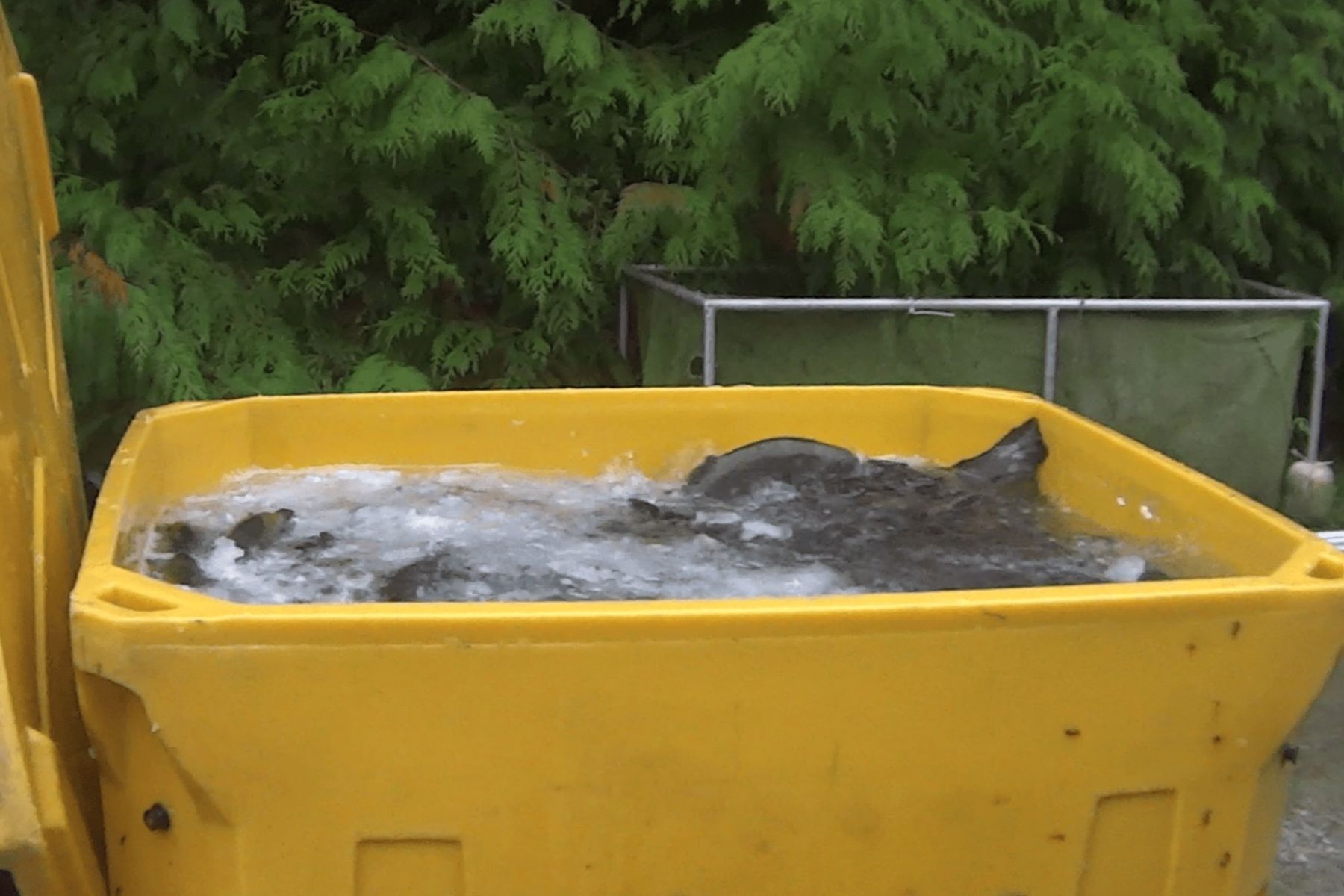
The fishes we saw suffered on ice for over an hour before being brought to the killing room, where many already appeared to be dead and frozen solid.
The primary method for killing salmons at this farm is to beat them over the head with a metal club. Then they are cut open and thrown into another ice slurry. Many fishes appeared to remain conscious after being struck, and were sliced open while apparently still alive.
“It looked more like the general flopping and trying to get away from a harmful stimulus that you see in a conscious fish.”
— Dr. Becca Franks, Assistant Professor of Environmental Studies, New York University


Tell Canada to #BanCaviar
In Canada, farmed land animals such as cows, pigs and chickens have almost no protections from cruelty—but fishes have it even worse. Over 458 million fishes are killed annually in Canadian fish farms alone, and at least 10 billion aquatic animals are killed in Canadian fisheries every year.
The caviar industry is relentlessly cruel and unnecessary. Suffering fishes spend their lives in cramped, filthy tanks, are cut open over and over and violently slaughtered—all to make an opulent garnish that the vast majority of people do not eat and can’t afford.
Join us in calling for a ban on the sale and production of caviar in Canada, and stronger legal protections for fishes, and help make a difference today by leaving animals off of your plate.
